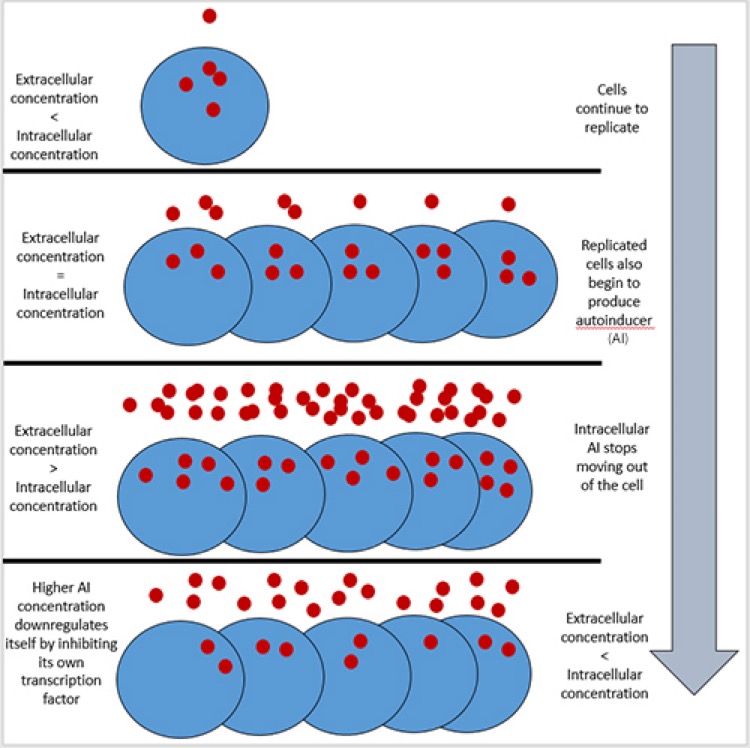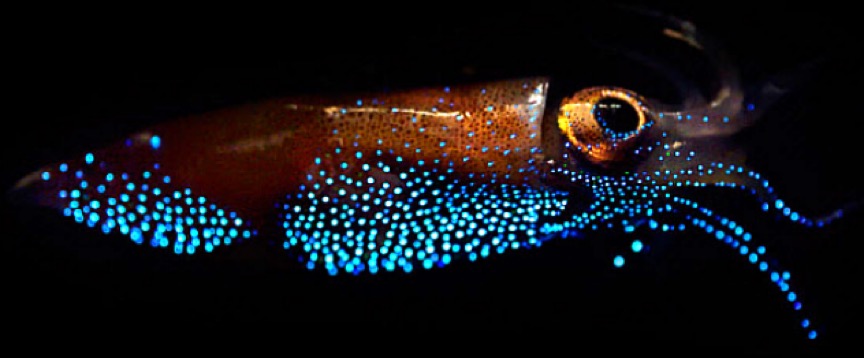Quorum sensing
Published on 1 Sep 2023
Biology
Click to watch the summary of this article
Kenneth Nealson, Terry Platt, and J. Woodland Hastings initially described quorum sensing in 1970, when they noticed what they described as a conditioning of the medium in which they had grown the bioluminescent marine bacteria Aliivibrio fischeri.
Quorum sensing, also known as quorum signaling (QS), is an intriguing biological phenomenon in which many different types of microorganisms, including bacteria, interact and coordinate their behavior in response to variations in population density. This phenomenon enables them to cooperate and carry out specific tasks that are helpful when carried out in unison. The synthesis, release, detection, and response to signaling molecules known as autoinducers are fundamental to quorum sensing.
Bacteria frequently live in complex communities, such as biofilms or colonies, where individual cells must coordinate their behaviors for efficient resource utilization, threat defense, and adaptation to changing surroundings. Quorum sensing allows these bacterial communities to monitor their own population level and take action when it reaches a specific threshold. Overall, QS demonstrates the unforeseen manners in which basic creatures may exhibit complex collective behaviors, opening up new study areas and potential applications in a variety of fields.
Quorum sensing relies mainly on producing and signaling special molecules which are called “autoinducers”. As the extracellular concentration of autoinducers is larger than intracellular concentration, cells continue to replicate until the concentration of extracellular concentration becomes larger than intracellular concentration, due to autoinducers produced by new cells, reaching a so-called “critical mass', so bacteria sensing it can be triggered to specific responses. There are mainly 3 common types of quorum sensing:
- LuxI/LuxR and AHL-based System
Involves LuxL and LuxR proteins as well as acyl-homoserine lactone molecules.
- AI-2 (Autoinducer-2) System
Relies on the production and detection of a molecule called autoinducer-2 (AI-2). Unlike the LuxI/LuxR and AHL-based System, it can be detected by a variety of bacterial species, helping different types of bacteria to communicate and coordinate their activities, creating interspecies cooperation.
- Oligopeptide-two-component-type quorum sensing
Involves the production of small signaling peptides, activating a two-component system consisting of a sensor histidine kinase and a response regulator. It regulates different bacterial behaviors.

Quorum sensing is mainly used by bacteria to coordinate disease progression. However, not all types of bacteria can produce autoinducers, even though they can detect them. Most likely, bacteria inhabiting our guts are also that type of bacteria, thus they can detect harmful bacteria in our body to prevent diseases.
Quorum Sensing can be a threat for human beings, because viral bacteria are “enchanting” each other through it. Bacteria such as Burkholderia cepacia and Pseudomonas aeruginosa communicate using Quorum Sensing, co-infecting our lungs. One more example is that the cooperation of P. gingivalis and Streptococcus gordonii results in mixed biofilm destruction, which can be more challenging than unmixed biofilm.
Since quorum sensing makes bacteria become a threat to the host organisms, many of those organisms have developed defense interfering and blocking quorum sensing. As an example, macroalgae Delisea pulchra produces furanones (The unsaturated lactone) which is similar to the AHLs, preventing the AHL signal of the bacteria from interacting with LuxR-type protein.
In areas including microbiology, medicine, and biotechnology, quorum sensing plays a significant role in bacterial interactions and is highly relevant. There are a lot of case studies and areas of current research connected to this phenomena that have been widely explored in diverse bacterial species. Here are some of them:
- Vibrio fischeri and Bioluminescence
Vibrio fischeri is a bacterium that uses quorum sensing to regulate its bioluminescence. The molecular mechanisms behind quorum sensing have been extensively researched using this scenario.

- Pseudomonas aeruginosa and Biofilm Formation
Biofilms, which are intricate bacterial communities wrapped in a matrix, are a well-known property of Pseudomonas aeruginosa. The growth and development of biofilms are governed by quorum sensing in P. aeruginosa, which has applications in the medical field.
- Synthetic Biology Applications
Researchers are also investigating synthetic biology methods to control quorum sensing systems for varied uses. This includes modifying bacteria to react to certain signals or generate particular chemicals in response to quorum sensing cues.
There are multiple commonly-used ways to detect molecules used in quorum sensing:
- Bioassays
Some bacteria create detectable output, such as fluorescence or bioluminescence, sometimes even visible to the naked eye.
- Mass Spectrometry
Using liquid chromatography/mass spectrometry can separate and identify molecules used in quorum sensing.
- Enzyme-linked immunosorbent essay (ELISA)
This method uses specific antibodies that bind to specific molecules used in quorum sensing, producing a colorimetric or fluorescent signal.
- Fluorescence Quenching
Some types of fluorescent proteins can lose their fluorescence after reacting with quorum sensing molecules.
Additionally, common methods of studying quorum sensing and details about molecules produced by these bacteria include:
- Fluorescence quenching studies
Use fluorescence proteins which undergo conformational changes after binding to quorum sensing receptors.
- Method to study quorum sensing-dependent virulence in animal models
Evaluates the role of bacteria that use quorum sensing depending on host responses, including tissue damage, bacterial loads, immune responses, survival rate, and bacterial load.
- Method to study quorum sensing-dependent biofilm formation
Uses microtiter plates and different types of microscopy scanners, like scanning electron microscopy and transmission electron microscopy, for analysis of mixed biofilms.
In conclusion, quorum sensing, with its fascinating ability to coordinate microbial behaviors, has unveiled a world of possibilities in various scientific domains. It has not only enriched our understanding of bacterial communication, as evidenced by its role in bioluminescence, anti-quorum sensing strategies, and biofilm formation, but also paved the way for groundbreaking applications in medicine, biotechnology, and environmental conservation.
Looking ahead, the future of quorum sensing research appears promising. Precision medicine may harness quorum sensing as a targeted therapeutic approach, mitigating bacterial infections with minimal disruption to beneficial microorganisms. Environmental remediation efforts can benefit from quorum sensing applications, offering eco-friendly solutions to persistent pollution problems. Advances in synthetic biology will further butress the engineering of bacteria with tailored quorum sensing responses, opening new oppurtunities in biotechnology and healthcare. The exploration of interkingdom quorum sensing between diverse microbial kingdoms may reveal uncharted territories of microbial interactions and symbiosis.
However, ethical considerations surrounding the use of quorum sensing in agriculture, medicine, and beyond must be addressed responsibly. Quorum sensing remains a testament to the intricacies of microbial life, offering endless opportunities for innovative research and responsible applications to meet the challenges of our time.
Sources
How Quorum Sensing Works (asm.org)
Quorum Sensing and Bacterial Social Interactions in Biofilms - PMC (nih.gov)
Chemical communication among bacteria | PNAS
Quorum Sensing Inhibition, Relevance to Periodontics - PMC (nih.gov)
Quorum Sensing: Methods and Protocols | SpringerLink